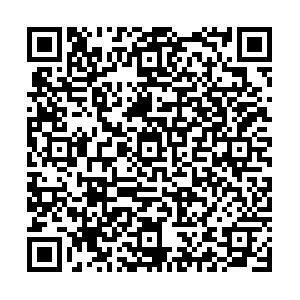| [1] |
BROM C, STáRKOVá T, D' MELLO S K. How effective is emotional design? A meta-analysis on facial anthropomorphism and pleasant colors during multimedia learning[J]. Educational research review, 2018, 25:100-119.
|
| [2] |
PARK B, KNöRZER L, PLASS J L, et al. Emotional design and positive emotions in multimedia learning:an eyetracking study on the use of anthropomorphisms[J]. Computers and education, 2015, 86:30-42.
|
| [3] |
MAYER R E. Searching for the role of emotions in e-learning[J]. Learning and instruction, 2019, 70:101213.
|
| [4] |
PEKRUN R. The control-value theory of achievement emotions:assumptions, corollaries, and implications for educational research and practice[J]. Educational psychology review, 2006, 18:315-341.
|
| [5] |
EFKLIDES A, KOURKOULOU A, MITSIOU F, et al. Metacognitive knowledge of effort, personality factors, and mood state:their relationships with effort-related metacognitive experiences[J]. Metacognition and learning, 2006, 1:33-49.
|
| [6] |
OAKSFORD M, MORRIS F, GRAINGER B, et al. Mood, reasonning, and central executive process[J]. Journal of experimental psychology learning, memory and cognition, 1996, 22:476-492.
|
| [7] |
郑玉玮, 毕婧华, 陆畅. 多媒体学习中的情绪设计:理论基础和设计方法. 现代教育科学, 2019, 2:134-140.
|
| [8] |
UM E, PLASS J L, HAYWARD E O, et al. Emotional design in multimedia learning[J]. Journal of educational psychology, 2012, 104(2):485-498.
|
| [9] |
MAYER R E, ESTRELLA G. Benifits of emotional design in multimedia instruction[J]. Learning and instruction, 2014, 33:12-18.
|
| [10] |
LE Y, LIU J, DENG C, et al. Heart rate variability reflects the effects of emotional design principle on mental effort in multimedia learning[J]. Computers in human behavior, 2018, 89:40-47.
|
| [11] |
PLASS J L, HEIDIG S, HAYWARD E O, et al. Emotional design in multimedia learning:effects of shape and color on affect and learning[J]. Learning and instruction, 2014, 29:128-140.
|
| [12] |
UZUN A M, YILDIRUM Z. Exploring the effect of using different levels of emotional design features in multimedia science learning[J]. Computers and education, 2018, 119:112-128.
|
| [13] |
龚少英, 上官晨雨, 翟奎虎, 等. 情绪设计对多媒体学习的影响[J]. 心理学报, 2017, 49(6):771-782.
|
| [14] |
STARK L, BRüNKRN R, PARK B. Emotional text design in multimedia learning:a mixed-methods study using eye tracking[J]. Computers and education, 2018, 120:185-196.
|
| [15] |
MORENO R, MAYER R. Interactive multimodal learning environments[J]. Educational psychology review, 2007, 19(3):309-326.
|
| [16] |
GREEN K E, SCHROEDER D H. Psychometric quality of the verbalizer-visualizer questionnaire as a measure of cognitive style[J]. Psychological reports, 1990, 66:939-945.
|
| [17] |
RIDING R, CHEEMA I. Cognitive style-an overview and integration[J]. Educational psychology, 1991, 11(3):193-215.
|
| [18] |
郑玉玮, 王亚兰, 崔磊. 眼动追踪技术在多媒体学习中的应用:2005-2015年相关研究的综述[J]. 电化教育研究, 2016, 4:68-76.
|
| [19] |
Gross J J, LEWENSON R W. Emotion elicitation using films[J]. Cognition and emotion, 1995, 9(1):87-108.
|
| [20] |
ISEN A M, REEVE J. The influence of positive affect on intrinsic and extrinsic motivation:facilitating enjoyment of play, responsible work behavior, and self-control[J]. Motivation and emotion, 2005, 29(4):295-323.
|
| [21] |
PAAS F G. Training strategies for attaining transfer of problem-solving skill in statistics:a cognitive-load approach[J]. Journal of educational psychology, 1992, 84(4):429-434.
|
| [22] |
DE KONING B B, TABBERS H K, RIKERS R M J P, et al. Attention guidance in learning from a complex animation:seeing is understanding?[J] Learning and instruction, 2010, 20(2):111-122.
|

 点击查看大图
点击查看大图



 下载:
下载: